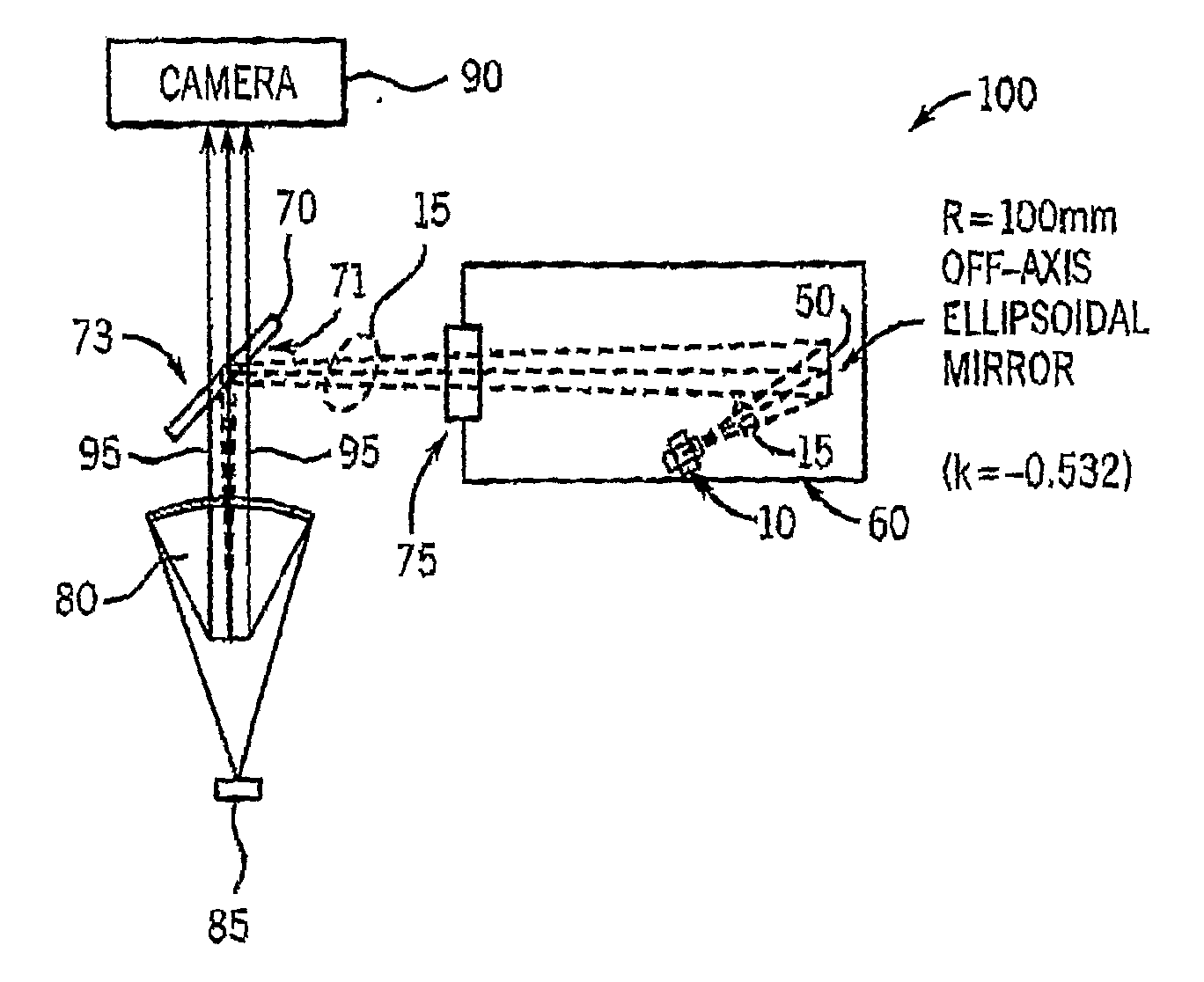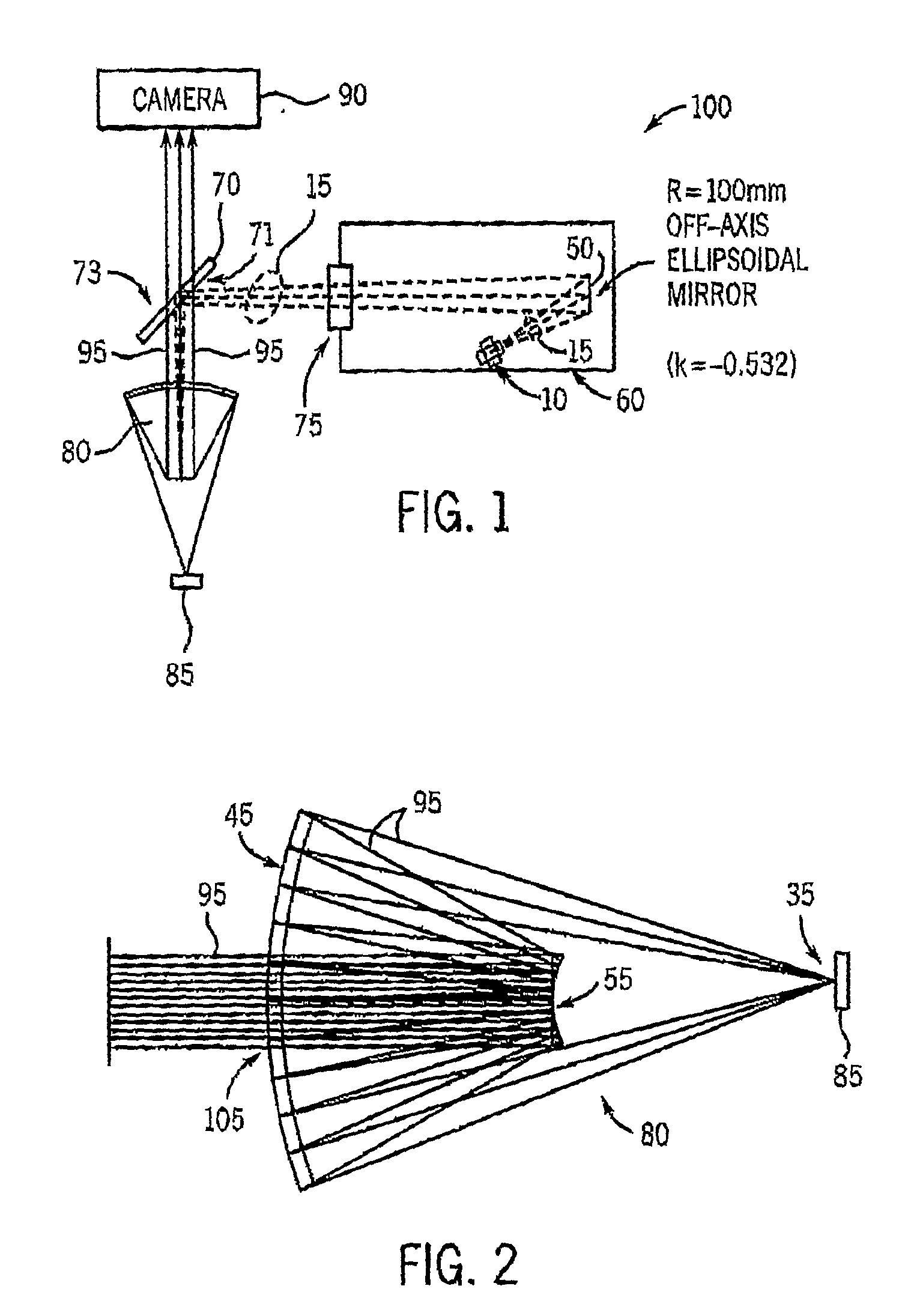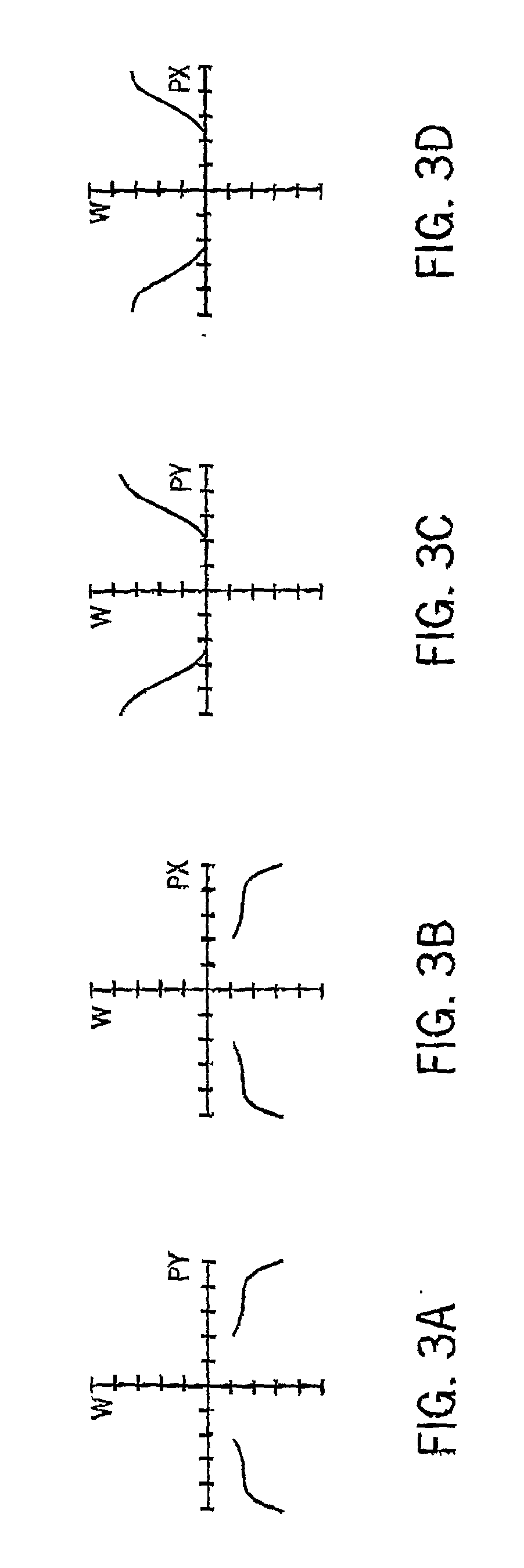Apparatus and Method for Deep Ultraviolet Optical Microscopy
- Summary
- Abstract
- Description
- Claims
- Application Information
AI Technical Summary
Benefits of technology
Problems solved by technology
Method used
Image
Examples
Embodiment Construction
[0025]FIG. 1 illustrates, in simplified schematic form, exemplary components of an optical microscope 100, in accordance with at least one embodiment of the present invention. As will be described in further detail below, the optical microscope 100 operates through the use of light at the Hydrogen Lyman-α line, that is, light at (or approximately at) a wavelength of 121.6 nm. This wavelength is in the “vacuum ultraviolet” and “deep ultraviolet” regions of the electromagnetic spectrum, which generally overlap one another, albeit the vacuum ultraviolet region is generally understood to extend from the region of strong absorption by molecular Oxygen near about 190 nm to the “Soft” X-ray region near 20 nm while the deep ultraviolet region is generally understood to extend to wavelengths somewhat higher than 190 nm (e.g., up to nearly 200 (e.g., 193) or 250 (e.g., 248) nm. Further as will be described below, utilization of light at the Hydrogen Lyman-α line should provide about a five-fo...
PUM
 Login to view more
Login to view more Abstract
Description
Claims
Application Information
 Login to view more
Login to view more - R&D Engineer
- R&D Manager
- IP Professional
- Industry Leading Data Capabilities
- Powerful AI technology
- Patent DNA Extraction
Browse by: Latest US Patents, China's latest patents, Technical Efficacy Thesaurus, Application Domain, Technology Topic.
© 2024 PatSnap. All rights reserved.Legal|Privacy policy|Modern Slavery Act Transparency Statement|Sitemap



